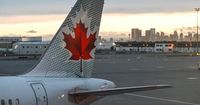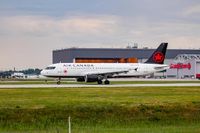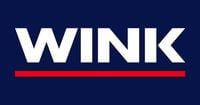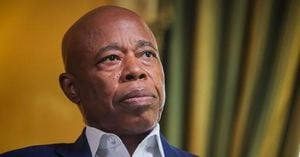On August 18, 2025, the Canada Industrial Relations Board (CIRB) declared a strike by more than 10,000 Air Canada and Air Canada Rouge flight attendants illegal, ordering them to return to work after the union ignored an earlier directive to resume duties and submit to binding arbitration. The strike, which erupted in the early hours of August 16, entered its third day on Monday, throwing Canada’s busiest summer travel season into chaos and impacting hundreds of thousands of travelers across the country.
According to Reuters and FlightAware.com, Air Canada had canceled 540 flights by late Monday morning, while Air Canada Rouge had scrapped 131 more. With Air Canada operating roughly 700 flights each day and typically carrying 130,000 passengers daily, the disruption was immediate and severe—especially as families, tourists, and business travelers filled airports at the height of the season. The airline now estimates that 500,000 customers have seen their flights canceled due to the ongoing dispute.
At the heart of the conflict are wages, working conditions, and a demand for compensation for duties performed on the ground—such as boarding passengers—for which flight attendants are currently not paid. The Canadian Union of Public Employees (CUPE), which represents the striking flight attendants, has been in contract talks with Air Canada for about eight months. Despite lengthy negotiations, the two sides remain far apart. Air Canada’s latest proposal offered a 38% increase in total compensation, including benefits and pensions, spread over four years. The company argued this would make its flight attendants the best compensated in the country. However, the union rejected the offer, insisting that the proposed 8% raise in the first year failed to keep pace with inflation and did not address the core issue of unpaid ground work.
CUPE national president Mark Hancock made the union’s stance clear at a press conference outside Toronto’s Pearson International Airport, stating, “If it means folks like me going to jail, then so be it. If it means our union being fined, then so be it. We’re looking for a solution here.” Hancock’s defiant remarks were met with cheers from picketing flight attendants, underscoring the depth of frustration among the workforce. On Sunday, Hancock had dramatically ripped up a copy of the initial back-to-work order in front of supporters, vowing that members would not return to work that week.
The CIRB, an independent tribunal that interprets and applies Canada’s labor laws, had previously ordered airline staff back to work by 2 p.m. on August 17, following government intervention. The board’s written decision instructed the union to provide written notice to all its members by noon Monday, making it clear: “The members of the union’s bargaining unit are directed to resume the performance of their duties immediately and to refrain from engaging in unlawful strike activities.”
Despite the legal order, CUPE leadership has refused to relent. Air Canada, for its part, suspended plans to restart operations on Sunday after the union defied the return-to-work directive. The airline then announced it would aim to resume flights Monday evening, but with no sign of union compliance, the standoff persisted. In a message to cabin crew, Air Canada executive Andrew Yiu warned, “What your union has not explained is that by not returning to work, you are personally accountable for that decision. To be clear, there is no lockout in place, and the continued strike is illegal.”
The government’s options for enforcing the CIRB’s order are limited but significant. As Reuters reported, legal experts say the Canada Labour Code allows for fines and sanctions against the union and individual workers who defy such orders. The government could also seek court enforcement or expedited hearings, or introduce legislation to force an end to the strike. However, with parliament on break until September 15, any legislative solution would require cross-party support and could take time. Dionne Pohler, a professor of dispute resolution at Cornell University, noted, “The government will be very reticent to be too heavy-handed because in Canada the Supreme Court has ruled that governments have to be very careful when they take away the right to strike, even for public sector workers that may be deemed essential.”
Prime Minister Mark Carney weighed in on the crisis Monday, emphasizing the widespread impact. “We are in a situation where literally hundreds of thousands of Canadians and visitors to our country are being disrupted by this action,” he told reporters in Ottawa. “I urge both parties to resolve this as quickly as possible.” Carney acknowledged the disappointment that talks had not yielded a deal and stressed that it is important for flight attendants to be compensated fairly at all times. He added that his jobs minister would address the issue further.
The dispute has drawn comparisons to recent labor battles in the United States, where flight attendants at American Airlines and Alaska Airlines won agreements requiring carriers to pay for time spent boarding passengers. CUPE is seeking similar ground-duty compensation, as well as wage parity with Canadian competitor Air Transat. The union’s demands have resonated with many passengers, who have expressed support on social media. Yet, as the strike drags on, some travelers’ patience is wearing thin. Danna Wu, a University of Manitoba student, told Reuters she and her husband would have to drive from Winnipeg to Vancouver if the strike continued. “It’s not responsible to strike and leave thousands of passengers in such chaos,” she said, even as she sympathized with the flight attendants’ call for better pay.
For Air Canada, the financial fallout has been swift. The carrier suspended its third-quarter and full-year 2025 profit guidance as a result of the walkout, and shares dropped about 1% in trading on Monday. The company has stated, “Air Canada regrets this impact on its customers and is fully committed to returning to service as soon as possible.” Passengers whose flights have been canceled or disrupted are eligible for full refunds through Air Canada’s website or mobile app, and the airline has posted updates for affected customers at www.aircanada.com.
The current standoff is not without precedent. Last year, the Canadian government intervened in rail and dock strikes that threatened to cripple the economy, forcing unions into arbitration. However, it remains highly unusual for a union to openly defy a CIRB order. The union representing rail workers is now suing, arguing that government intervention erodes labor’s negotiating power.
As the strike enters its fourth day, the path forward remains uncertain. The government faces pressure to balance the rights of workers with the needs of travelers and the broader economy. Meanwhile, Air Canada flight attendants continue to hold the line, insisting that their demands for fair compensation and recognition of their work—both in the air and on the ground—must be addressed. With parliament on break and no immediate sign of compromise, travelers and industry watchers alike are bracing for further turbulence in the days ahead.
The Air Canada strike has become a flashpoint for broader debates about labor rights, essential services, and the evolving expectations of airline workers. As both sides dig in, the outcome of this dispute could set an important precedent for future labor relations in Canada’s transportation sector.







